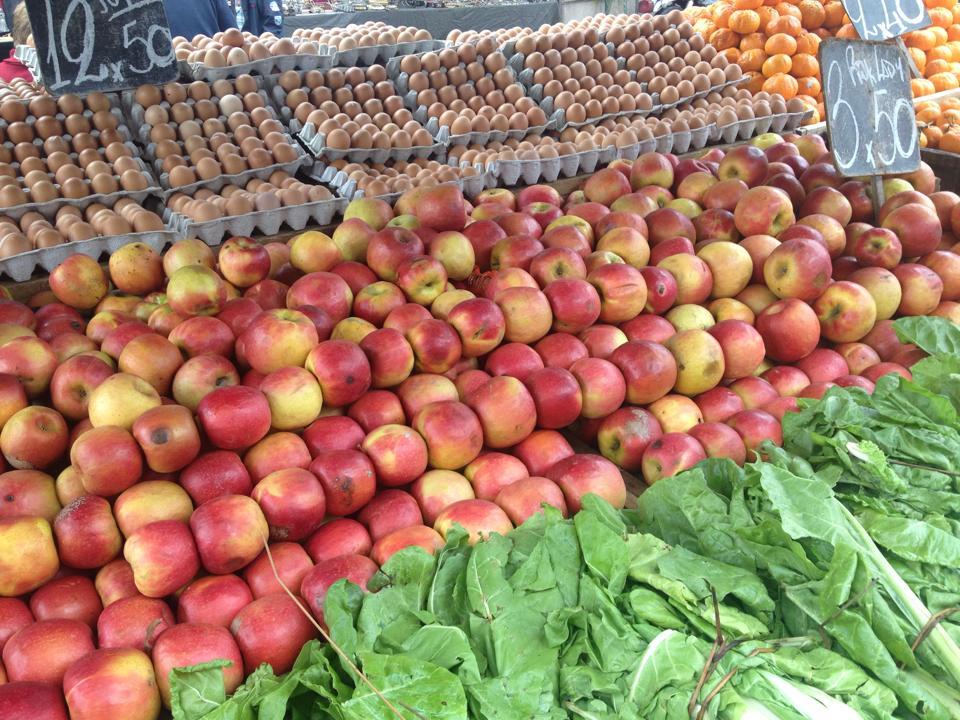
Earlier this month, the Economist Intelligence Unit (EIU) issued its Annual Global Food Security Index. This year’s survey, which evaluated data from 113 countries, sheds light on which nations have the most robust – and vulnerable – food supplies. The world’s population could surge to 9 billion people by 2050, which means governments, the private sector and nonprofit organizations need to find creative yet more sustainable ways to meet increasing demand for food – planning that should have launched many yesterday’s ago.
EIU researchers evaluated three core challenges that each and every one of us considers when we shop for food: affordability, availability and quality.
The natural reaction to this report is for citizens to thumb through the report and see where his or her country ranks. This study, however, has value for food and beverage companies as well, even if it sparks more questions than answers. Where are long-term risks across a global supply chain? As the world increasingly turns to populism and protectionism, what are potential workarounds considering one-fourth of all food humans consume is traded across borders? What new markets offer opportunities?
And for companies that have pledged to align with the United Nations Sustainable Development Goals (SDGs), what options do businesses have to work closely with governments and nonprofits to ensure the world in 2030 is not one rocked by food shortages or in the worst-case scenario, famine?
TriplePundit recently had the opportunity to interview Robert Smith, an EIU consultant, to distill a few of this report’s findings. The big takeaway? While partnerships across sectors is hardly new, the lesson for business is that plenty of rocks are still unturned. Companies including General Mills, Unilever and PepsiCo have long found that working closely with nonprofits can help improve supply chain sustainability worldwide. In addition, large environmental organizations such as WWF have found that engagement, not estrangement, with the private sector can help advance environmental responsibility and tackle problems like deforestation - while improving agricultural practices that can also generate more economic opportunities.
Here are some of the report’s highlights.
3p: Talk about the key metrics you analyze and why you emphasize them.
RS: Food consumption as a share of household expenditure and sufficiency of supply are two fundamental components of the “affordability” and “availability” categories. They're essentially the headline indicator (and receive the highest weightings) under their respective categories. The higher the household expenditure on food, the lower the food security in a country (that is, food is less affordable). The higher a country's food supply, the higher its food security.
3p: What surprised you about this list's rankings?
RS: Particularly interesting is the fact that Singapore ranks number one overall in global food security (affordability, availability and quality and safety), but drops 15 spots in the rankings when applying the “natural resources and resilience category. In addition to high susceptibility to rising temperatures, rising sea levels and other climate-related risks, Singapore is also highly food-import dependent. This leaves it at even greater risk to these climate-related risks in addition to trade and supply disruptions.
3p: What is one country that is getting it right, whether it made huge improvements or have remained toward the top of the list - and why?
RS: Despite some minor shifts in the rankings since 2012, the top ten countries are all high income (i.e., their citizens overall are able to afford food), have reliable food supplies, and have developed policies and institutions to improve the quality and safety of food.
One country worth highlighting, though, is Colombia (ranked 49th), which has seen its overall food security score improve the third-most of all countries since 2012. This is partly attributed to an improved economic situation in the country and slightly lower agricultural import tariffs, but also greater efforts by the public sector to provide farmer financing (for example, insurance and credit) and to reduce the need for chronic food aid for certain populations.
3p: Concerns over food security have an impact on global food companies' supply chains as well. What can the private sector do to work with governments to ensure the world's growing population has secure access to food, even as the planet's population approaches 9 billion by 2050?
RS: Partnerships between the private, public and nonprofit sectors is essential. Private sector innovation from production to consumption (as in new strategies to improve production and reduce food waste, for example) will also be key.
Image credit: Leon Kaye

Leon Kaye has written for 3p since 2010 and become executive editor in 2018. His previous work includes writing for the Guardian as well as other online and print publications. In addition, he's worked in sales executive roles within technology and financial research companies, as well as for a public relations firm, for which he consulted with one of the globe’s leading sustainability initiatives. Currently living in Central California, he’s traveled to 70-plus countries and has lived and worked in South Korea, the United Arab Emirates and Uruguay.
Leon’s an alum of Fresno State, the University of Maryland, Baltimore County and the University of Southern California's Marshall Business School. He enjoys traveling abroad as well as exploring California’s Central Coast and the Sierra Nevadas.














